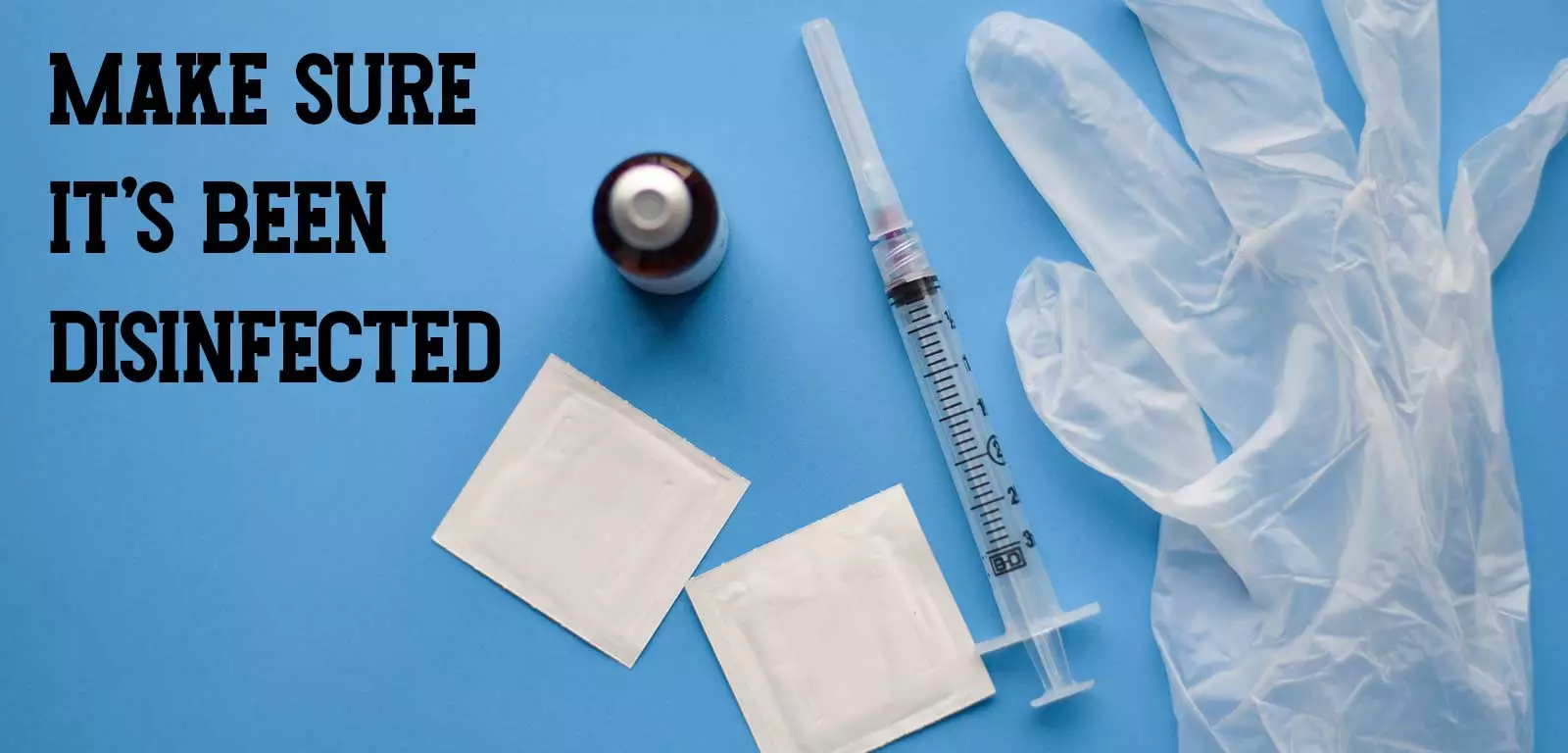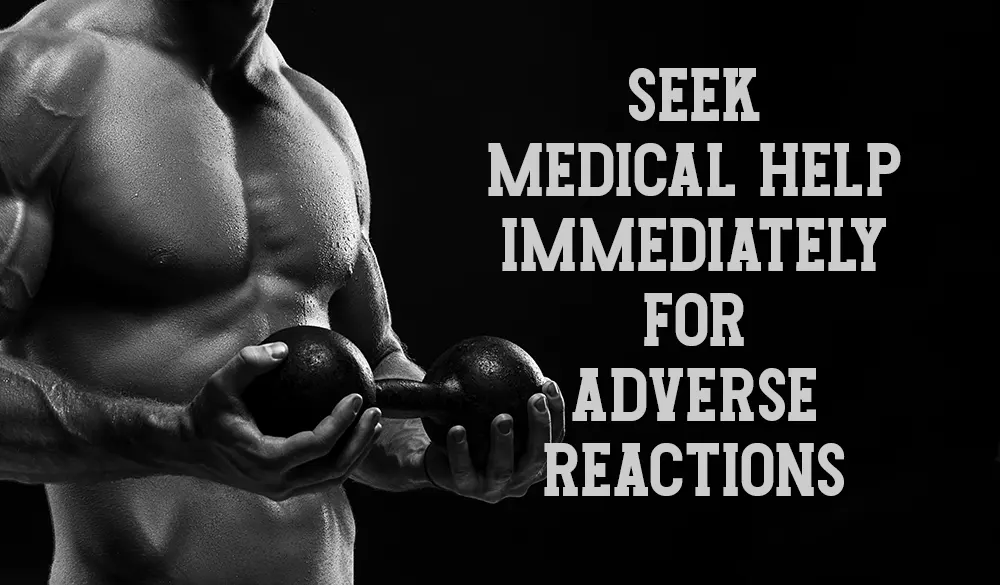If you’re injecting steroids, you know how important it is to learn the correct injection techniques. If not, you’re likely learning about your first injection as we speak!
While injecting steroids isn’t difficult, there are some important things you need to know before starting. You want to be as safe as possible and avoid potential complications such as abscesses or infections. Injecting bad or old gear could also cause health problems that might take a long time to clear up – if they ever do.
Before we start, let’s look at why you should consider injecting steroids. If you’re a guy in your teens or early 20’s and reading this, I highly advise against using steroid injections because the risks far outweigh any potential benefits for young men. You should instead focus on natural ways to boost your testosterone levels. So, if you choose to proceed, use steroids responsibly and appreciate the extra side effects associated with steroid injections.
In this article I will provide tips for safe steroid injections.
Getting Ready for Injection
Before injecting, you want to make sure you have everything prepared. Steroid injections can be dangerous if you don’t prepare properly, so please read every section of this article before injecting.
Select Your Injection Site:
You want to inject into a muscle that is not covered by a major organ or artery. A good injection site would be the outer side of the upper arms, shoulders, buttocks, or thighs. The most important point is choosing an injection site that you can easily reach and remember in the future. Some people like to mark their sites with a pen before injecting.
Recognizing Trouble:
Before injecting any steroids it’s important to know what signs might indicate trouble. Indications of a bad injection include redness, persistent pain or a hard lump that is deep under the skin. These can be signs of infection, and you should stop immediately if you experience any of these symptoms.
Start on the Inside:
Your first injection should be done on the inside of your arm (underneath the skin) or on your stomach. These areas are good for beginners because they’re not overly sensitive and there is no large artery nearby if you miss your target.
This first injection will only be a small dose to familiarize yourself with the process and help you get started injecting without too much discomfort or risk of injury. Aiming for a small target and starting slow will help you get the hang of injections without too many bad experiences.
Choosing the right material for injection:
Always use a brand-new needle for injections. If you want to reuse a needle, make sure it’s been disinfected in alcohol or anti-bacterial soap beforehand. Most users will either use a 1ml insulin syringe or an insulin pen. If you choose to use the latter, follow standard practices, and only draw up enough fluid for your injection(s) that day. Never re-use the pen because it could get contaminated with bacteria and other infections from multiple steroid users.

What You Need:
Alcohol or disinfectant – Disinfecting your skin before is very important! Alcohol is the quickest option. If you have time, give your skin an alcohol rub down for 30 seconds or so before injecting. Make sure not to drink any alcohol beforehand unless you’re planning on having a pre-injection drink with your buddies!
Distilled water – Steroids are usually packaged in vials that contain distilled water. You can also use normal tap water but distilled is preferred because it lacks impurities and other chemicals that could cause pain or hinder the absorption of the steroid. If you don’t have sterilized (distilled) water then bring some clean tap water to boil until it comes to a rolling boil; let it cool off for around 5 minutes before drawing up your dose, then proceed as usual.
Cotton balls/Q-tips – Cotton balls will help clean the injection site if it is covered in hair before injecting, they might help absorb some blood if there are air bubbles under the skin. Q-tips are for cleaning your ears after the procedure because cotton swabs are too small for this task.
Sterile gloves – Always wear sterile gloves during preparation and injection. Never touch anything with bare hands unless you want an infection! Sterile gloves will also keep your hand from getting covered in lint which is the last thing you want when trying to inject into your muscle.
The needle– When it comes to choosing needles, many of us are stuck between getting something small enough for sub-q use and large enough so it doesn’t bend or break under its own weight. There are no hard rules about this, just experiment until you find what works best for you.
Selecting the right barrel length– The barrel length is measured by the diameter of the shaft, so if it has a 10mm diameter then that means it has an 11-12gauge (the smaller the number the thicker the needle). Long barrels are less comfortable because there is extra shaft between your skin and the injection site, but long barrels allow you to inject deeper into a muscle.
Once you’re confident about needle length, always choose the longest barrel possible without causing significant pain or discomfort. You want to be able to shoot as much fluid as possible because it will reduce your chances of missing your target and injecting too shallowly.

Make sure you’re putting the needle in the proper spot.
The best places to inject are the glutes, delts, quads, or outer thighs. Avoid injecting into your biceps or forearms because doing so could lead to a loss of function in the arm, you also run the risk of hitting your radial nerve if it’s not properly numbed first by injecting too close to the bone.
Don’t inject right next to where you stuck last time. The body responds poorly to repetitive injections in the same spot by building up scar tissue around it making future injections more painful and less effective. Try rotating between front-side & back-side injection sites. Some people are lucky enough to have no side effects from steroid use after years of heavy cycling, but most users will experience soreness, swelling which takes longer than usual to go down, and fluid retention causing a not-so-attractive looking “moon face”.
While injection sites such as the glutes and delts can be rotated to prevent this from happening, it’s also important to take account of how much Iodex you use on yourself after injecting because if your skin is sensitive or irritated then it will continue to go downhill. If this happens, try using warm compresses and a natural anti-inflammatory like aloe vera (do not apply aloe directly onto open wounds) before applying Iodex.
Rather than using alcohol to disinfect the site, another alternative would be using hydrogen peroxide first before putting on any sterile gauze bandages; make sure there is no residue left behind as that can be very irritating to sensitive skin.
If you use Stingers, do not put alcohol on the open wound because it will sting like hell! A stinger is a hollow plastic tube that allows fluid to pool before being injected, so if any residue of your steroid solution is left inside the stinger after snapping off the needle then it’s fine just to leave it alone until normal blood flow revives it.
Visit your local needle and syringe service
A lot of the time needles are overlooked because people think you can just buy them at their local pharmacy, but if your injecting steroids on a regular basis then it would be beneficial to visit your local needle and syringe service. These places will provide you with clean, almost sterile needles so long as you provide proof that you’re injecting performance-enhancing drugs (you can say it’s for insulin if need be).
Many pharmacies now carry these services as well, so ask around before assuming there isn’t one in your area. If they do not, then feel free to contact your local health department or family doctor for an alternative solution.
Clean your injecting site properly
Before you inject, wash your hands with soap and water. Clean your injecting site with a single swipe of an alcohol swab as well. Scrubbing the swab over your skin will only distribute germs around. Allow your skin to dry for a minute before injecting. If you’re using a multi-dose vial, use a swab to clean the top of the vial. Put a second alcohol swab into a new package and wipe down your injection site, your hands, and the top of the vial.
How to inject it into your muscles?
- Tense the muscle you’re injecting into. This helps to keep it warm and rigid, which is necessary for an optimal injection.
- Pull back the plunger slightly on your syringe to make sure no blood enters inside. If any does, discard it and start over again.
- Pinch up a fold of skin on your injecting site with one hand, this will help you steady your aim when putting in the needle.
- Hold your syringe at a 90° angle facing straight into your skin just below where you have pinched up that fold of skin with one hand.
- Once the needle has pierced through the skin let go of that pinch, this will make the needle go all the way through.
- Keep holding your syringe at that same 90° angle and push down on the plunger with your thumb.
- When finished, wipe off any injection site blood with an alcohol swab (or iodine if you prefer).
- Pull out the needle at a 90° angle and dispose of it immediately in a sharp’s container or special disposal bin. Some pharmacies offer these free of charge.
All Done! Don’t forget to wash your hands afterward, inject correctly, rotate injection sites, don’t use too much Iodex or Stingers, and visit your local needle exchange or pharmacy for supplies.
When should one seek medical assistance?
If your injecting site is red, swollen or leaking pus then you should probably head to the hospital because that could be a sign of infection forming.
Be sure not to ignore pain in your muscles if it’s extremely painful when you inject into certain areas than don’t do it. You can damage muscle tissue and cause serious injury if you inject too hard or too fast.
Don’t use Stinger needles on people with infectious diseases like hepatitis C, tuberculosis, or HIV because their blood will enter the stinger needle.
After cycle reminder!
After your cycle of steroids, you will experience “Post Cycle Therapy”, or PCT. PCT is the process by which the human body returns to its natural state before taking anabolic androgenic steroids. During a steroid cycle, the body produces less testosterone due to the fact it believes it already has enough of it. PCT is a time in which your body asks for more testosterone, and you give it.
Injecting isn’t that hard to perfect, but you should know how if you want to run serious cycles of steroids. More than anything else, good injecting practices minimize the risks associated with steroid use.
To summarize, there are a few main rules to good steroid injecting technique:
- Wash your hands before and after.
- Clean your injection site after pinching it up.
- Use swabs to clean the top of the vial and your hands if using multi-dose vials.
- Remove as much air as possible from the syringe before injecting (less room for error).
- Inject slowly and smoothly at a 90° angle. Be sure not to inject too fast or too hard!
- Once finished, pull out the needle quickly at a 90° angle and dispose of it properly in a sharp’s container or safe disposal bin that some pharmacies provide free of charge.
If you feel like you are about to pass out, are sick or having other adverse reactions, then seek medical help immediately!
Injecting steroids isn’t as complicated as some people make it out to be, now you know how!


